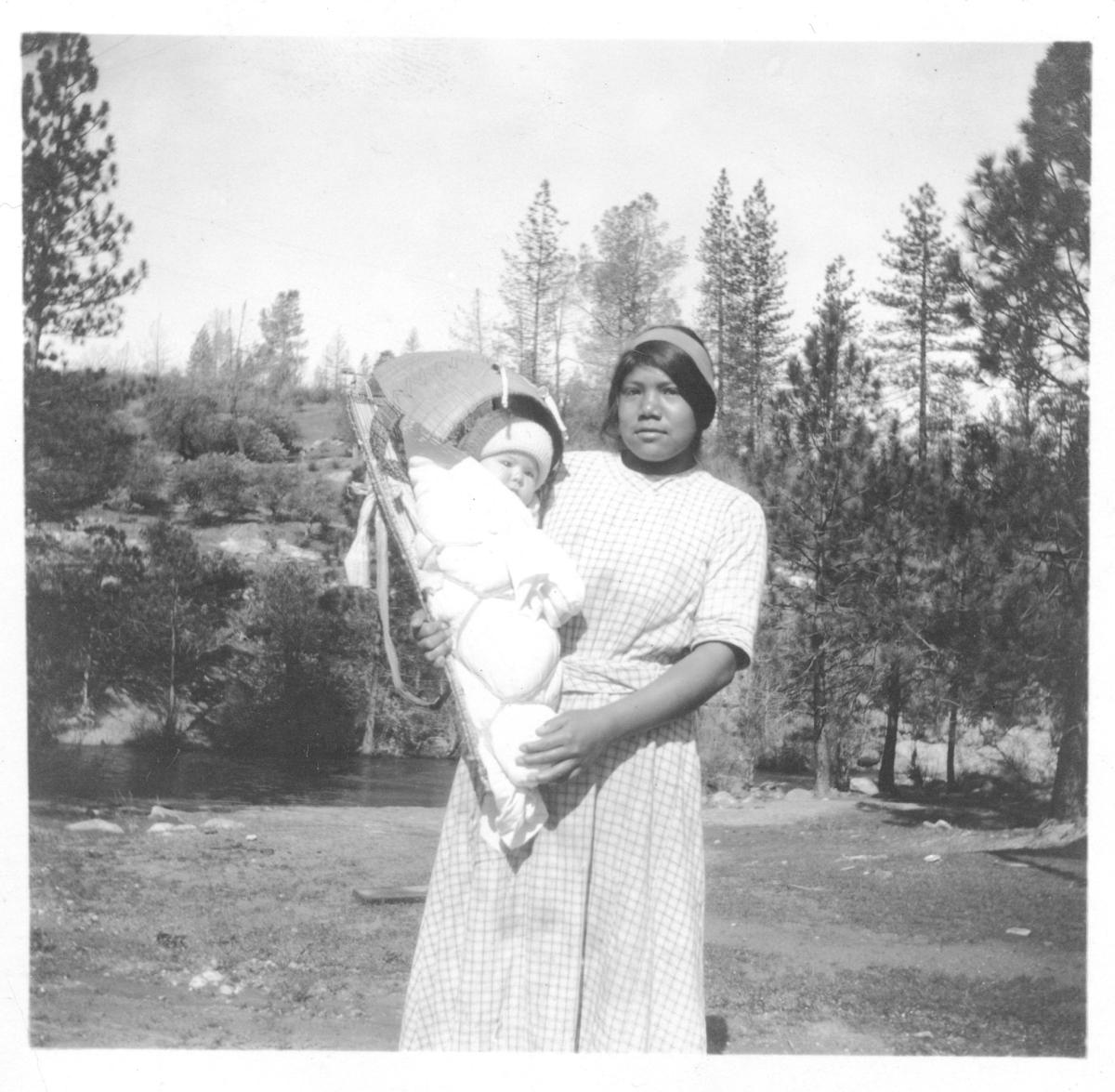
Photograph of Chuckachancy Woman and her Child, ca. 1920
Found in the administrative subject files of the Bureau of Indian Affairs (BIA) Sacramento Area Office, L.D. Creel’s “Photos and Explanations Illustrating General Report on California Matters" captures California’s American Indian population at a moment in time.
After years of removal, the U.S. Government turned to assimilation to curtail the indigenous populations. These photographs demonstrate traditional crafts and housing, as well as boarding school and missionary activities, during a time of great poverty for American Indian residents. The captions reveal common attitudes of their day—commenting on cleanliness, praising adoption of white mannerisms or dress, and devaluing of traditional practices. For example, this photograph of a Chuckachancy woman and child is captioned “while these [women] dress altogether as the whites and even abandoned their head hankerchief [sic], they still handle their children in the primitive way using the baby board or basket.”
Additional examples from the survey include:
- Photograph of the acorn caches of Mrs. Henry Towatt. The caption reads “…Although this family is one of the most progressive of any I met, the acorn is a matter of regular diet. She told me that the regular Indian diet before the advent of white was acorn mush and meat…The mush was very palatable and must be very nutritious.”
- Photograph of three Chuckachancy children. The caption reads “Three of a family of ten. There is apparently no race suicide in this family. All of the children of this family are strong and healthy. The little girl took the prize for the best baby at the baby show for Indian children held last year in Yosemite National Park.”
View and download more photographs from the survey on the National Archives Catalog. The National Archives at San Francisco holds nearly 3,000 cubic feet of RG 75 Bureau of Indian Affairs (BIA) records from offices in northern California and northern Nevada. The bulk of these records date from the 20th century and are arranged by the BIA office or agency which created them such as the Hoopa Agency, Carson Agency, or Sacramento Area Office. You can explore more records held in the National Archives at San Francisco by searching our online Catalog or by visiting our research room in person. We encourage researchers to contact us to learn more about our holdings or to schedule an appointment.
Click here to learn more about American Indian and Alaska Native records available at National Archives locations throughout the country. The National Archives at San Francisco is located in San Bruno, CA, which is situated on the ancestral lands of the Ramaytush Ohlone people.
